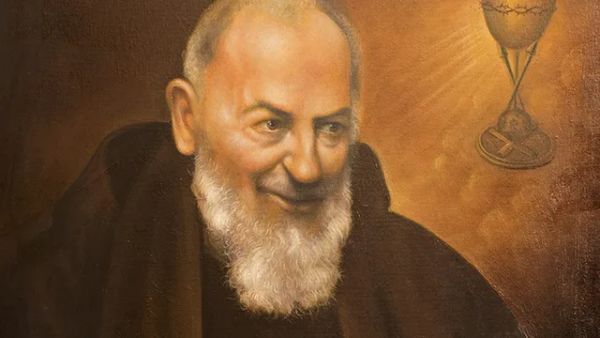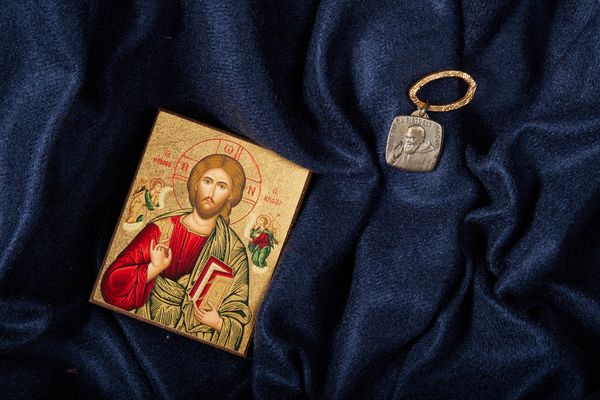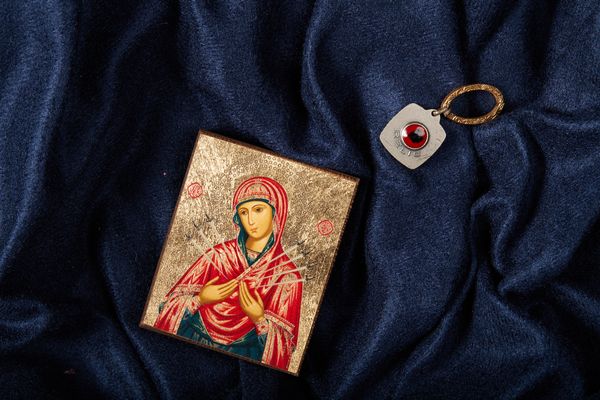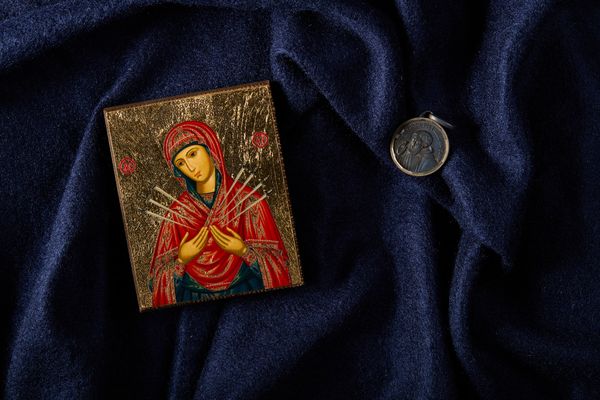St. Padre Pio was an Italian priest who was known for his piety and charity, as well as the gift of the stigmata, which has never been explained.
St. Padre Pio was born Francesco Forgione. His parents were peasant farmers. He had an older brother and three younger sisters, as well as two other siblings who died in infancy. As a child, he was very religious and by the age of five he reportedly made the decision to dedicate his life to God. Fortunately, his parents were also very religious and they supported his Catholic development. His family attended daily Mass. Francisco served as an altar boy at his local parish. Francisco was known for taking on penances and his mother once scolded him for sleeping on a stone floor.
Francisco's community was also supportive. Saint's days were popular celebrations and commonly celebrated in his town. From his tender age, Francisco had a peculiar ability. He could see guardian angels, spoke with Jesus and the Virgin Mary. This was not something taught to him, but occurred so naturally that he assumed other people could see them too.
Although Francisco and his family was very religious, they were also very poor, which required that he work. He spent many years as a child tending to a small flock of sheep owned by his family. The work meant he was unable to attend school regularly, so he quickly fell behind other kids his age. He was sickly as a child. He suffered an attack of gastroenteritis at age six and when he was ten, he had typhoid fever.
In 1897, after three years of schooling, Francisco expressed to his parents that he wanted to become a friar. His parents traveled to a nearby community of monks and asked if Francesco could join them. He was evaluated, despite his young age, and was told that he needed more education before he could join. His parents decided to hire a private tutor. To pay the cost of the tutor, Francesco's father traveled to America to find work, and sent the money home.
At the age of 15, Francisco was finally ready and he entered the novitiate of the Capuchin friars at Morcone. He took the name of "Pio" in honor of Pope Pius I, whose relic he often saw at his local chapel. At the age of 17, Brother Pio became extremely ill and could only digest milk and cheese. He was sent to the mountains for better air, and when this did not work, he was sent home to his family. Amid all this, he continued to study for the priesthood. On one occasion during prayer, a fellow monk astonishingly reported he saw Pio levitate during an episode of ecstasy.
In 1915, with World War I afflicting the world, Padre Pio was summoned for military service. He was compelled to leave a tiny community of monks, with whom he was then housed, and drafted into medical service. However, he was so sickly that he was often sent home, only to then be recalled for service. In March 1916, he was finally dismissed because of his poor health.
On September 20, Padre Pio was hearing confessions when he felt pain in his hands and feet. He noticed the stigmata, the wounds of Christ, appearing on his hands and feet. The experience was painful. Bleeding occurred. The wounds smelled of roses, and although they continued to weep, they never became infected. Doctors who later examined the stigmata were amazed at their perfectly round shape.
By 1919, word began to spread about Padre Pio's stigmata and people came from far away to examine him. Padre Pio became popular with the people he encountered and soon began to attribute supernatural occurrences to him. For example, he was said to levitate, and able to perform miracles. His popularity became a source of concern for the Church and the Vatican began to restrict his activities to minimize public interaction. Padre Pio himself was uncomfortable with his newfound popularity and the attention he received because of his stigmata. A Church investigation into his stigmata concluded that his condition was not faked.
By 1934, the Vatican began to change its attitude towards Padre Pio and he was again allowed to perform public duties. He could preach, despite never being officially licensed by the Church to do so. Pope Pius XI encouraged people to visit him.
In 1947, Fr. Karol Wojtyla visited Padre Pio who prophetically told him he would rise to the highest post in the Church." Fr. Karol Wojtyla became Pope John Paul II in 1978.
Padre Pio used his newfound popularity to open a hospital in San Giovanni Rotondo. The facility opened in 1956. Pope Paul VI reviewed the controversies surrounding Padre Pio and dismissed any concerns over his conduct and the authenticity of his stigmata. Padre Pio became internationally famous. He was known for his piety, charity and the quality of his preaching. He famously advised, "Pray, hope and don't worry."
He had other illnesses, as well, including cancer which was miraculously healed after just two treatments. Other problems, such as arthritis, which plagued him in his later years, never went away.
Padre Pio died on September 23, 1968. His funeral was attended by over 100,000 people.
Pope John Paul II recognized Padre Pio as a saint on June 16, 2002. His feast day is September 23. He is the patron of civil defense volunteers, adolescents, and the village of Pietrelcina.



